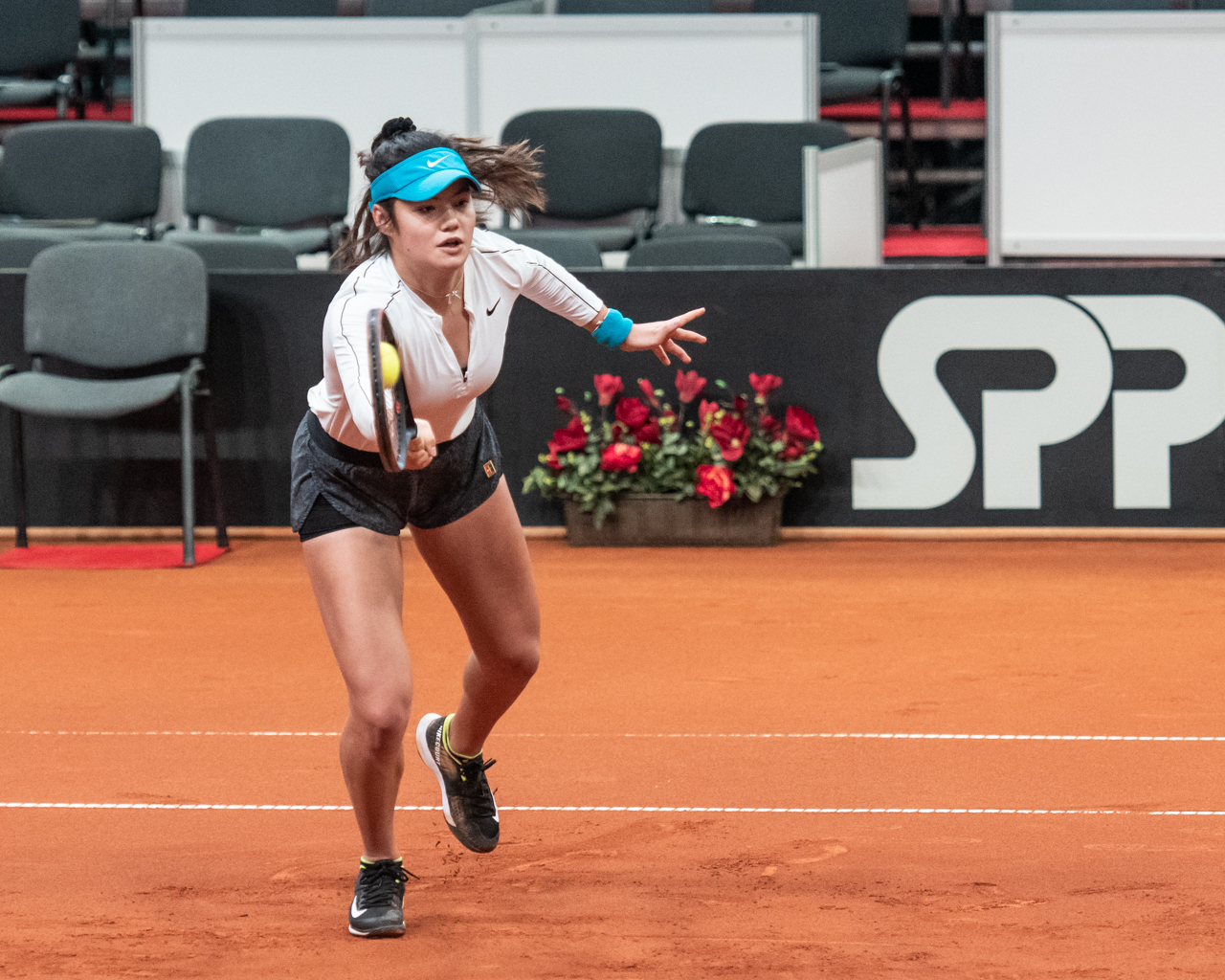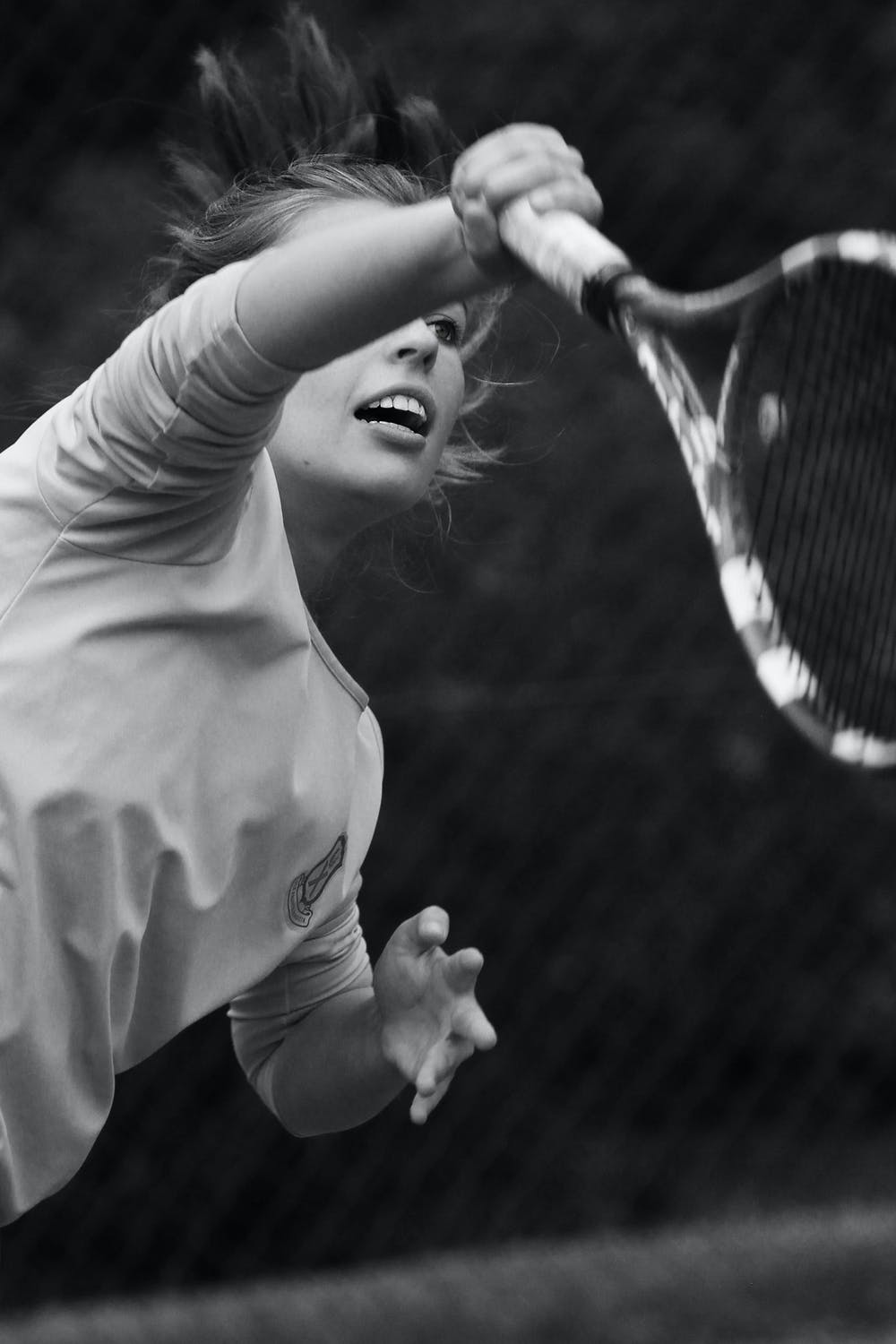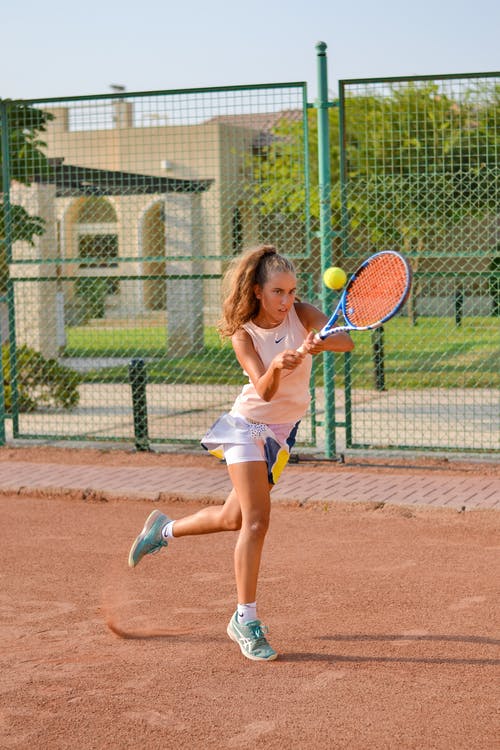
fcielitecompetitor.com, fciwomenswrestling2.com, femcompetitior.com, grapplingstars.com, fciwomenswrestling.com lev-radin-Shutterstock-photo-credit-Editorial-use
March 25, 2022,
If you are a budding female tennis player and have been sitting on the fence, perhaps after giving tennis a try, the last 2021 US Open should inspire you, watching a brand new champion make it to the finals.
And win it all.
Emma Raducanu is a British professional tennis player. She was born in Toronto and raised in London.
She reached a career-high ranking of No. 12 by the Women’s Tennis Association (WTA) and is the current British No. 1. Raducanu is the reigning US Open champion and the first British woman to win a Grand Slam singles title since Virginia Wade in the 1977 Wimbledon Championships.
She is considered a baseline player, known for her powerful, flat groundstrokes and aggressive return of serve.
At the 2021 US Open, Ms. Raducanu became the first singles qualifier in the Open Era to win a Grand Slam title, beating Leylah Fernandez in the final.

She won three rounds of qualifying matches and seven matches in the tournament, without losing a set. This was the second Grand Slam tournament of her career; she holds the record for the fewest majors played before winning a title.
For a newbie, extremely impressive, wouldn’t you agree?
If you are inspired, and we hope that you are, you might begin to play a lot of tennis, which is great.
One of the leaders in our circle is actually a former USTA Official in Northern, California.
Newer players tend to get excited and play a lot of tennis, especially during the spring and summer.
The caution is, avoiding injuries.
One of the most frequent and very painful injuries is tennis elbow.
Simply put, once you start swinging that racquet over and over, the repetition can cause inflammation.
There is a book on Amazon that might be helpful in this regard.
Tennis: Tennis Elbow Cure: How to Prevent and Treat Elbow Pain and Tendonitis Forever (Tennis Elbow Cure, Sports Injury, Knee Pain, Back Pain, Shoulder … Pain Relief, Weight training, Book 1) Kindle Edition

By Max Logan (Author) Format: Kindle Edition
Discover How to Overcome Elbow Pain and Tendonitis Forever!
“You’re about to discover how to finally overcome the persistent elbow pain and tendonitis that simply won’t go away. As a previous sufferer of Tennis Elbow pain for over a year, discover the rehabilitation techniques that helped me and you too can apply these simple steps to aid you in your recovery to a pain free life. No need to suffer in silence!
This book is a step in the right direction.
Learn about all the options you have available, from non-surgical options, surgical alternatives, therapy solutions, pain relief medications to daily exercises you can apply to rehabilitate your pain. Whatever course of action you decide to take, this book will aid you on your road to recovery.”
Sounds very informative and well worth the read.
Our idea is not to slow down your passion. Just harness it wiser.
There is a female doctor and writer in the house.
Orthopedic surgeon Dr. Stacie L. Grossfeld is a graduate of the University of Louisville School of Medicine.
She served her internship and residency at the University of Minnesota.
In addition, Dr. Grossfeld completed a fellowship in Sports Medicine at the Fowler-Kennedy Sports Medicine Center. She is a Board Certified orthopedic surgeon by the American Board of Orthopedic Surgery (ABOS).
In addition to her practice as an orthopedic surgeon, Dr. Grossfeld is also an Assistant Clinical Professor for the Sports Medicine Fellowship Program at the University of Louisville and Instructor in the Department of Family Medicine and the Department of Internal Medicine and Pediatrics.
Dr. Grossfeld is committed to serving as a mentor to encourage other female medical students to consider a career as an orthopedic surgeon, through the American Academy of Orthopedic Surgery (AAOS). Dr. Grossfeld’s special interests as an orthopedic surgeon includes knee and shoulder reconstruction and sports medicine.
In her free time when not working as an orthopedic surgeon, Dr. Grossfeld enjoys playing tennis.
Sounds like an incredible resume.
Here is her advice regarding tennis elbow.
Tennis Elbow – Find Out More About Tennis Elbow and How To Treat It

Tennis Elbow, also referred to as Lateral Epicondylitis, or pain in the lateral elbow, is a common condition that spans in severity from inflammation of the elbow tendons to an actual tear within the tendon.
Caused by repetitive use that places strain on the two elbow tendons which extend to the wrist, people with tennis elbow have pain during wrist extension. Certain activities which include lifting a coffee mug or jug of milk, can cause the elbow pain associated with lateral epicondylitis.
The lateral epicondylitis region of the elbow has two tendons, the ECRL and the ECRB. These tendons go down the arm and attach to two bones in the wrist and hand. The ECRL and the ECRB work to pull the wrist and hand upward for extension. When a person has tennis elbow, there is a limited blood supply where the two tendons attach at the elbow. This makes it harder for the body to heal or recover from the tendonitis once it begins. It also helps to explain the chronic nature of this condition.
In tennis players, tennis elbow can be triggered by improper technique, a cracked racquet, or a racquet that is too stiff. New tennis racquets, new strings, increased tension of strings, or a new tennis pro that is teaching different than you are used to or new techniques learned, can all contribute to tennis elbow.
The racquet often causes tennis elbow. Tennis racquets that have a high power level or are very stiff can cause lateral epicondylitis. This is typically found in a double player type of racquet. If you are a tennis player suffering from tennis elbow, it may be worth consulting a certified racquet technician (CRT) to find out what type of racquet you should use.
Treatment for Tennis Elbow
If you are seeking medical treatment for tennis elbow, you have a number of options with orthopedic surgery only recommended as a last resort. As with other medical problems, it is always advisable that you seek medical attention and advice from your doctor.
The treatment of lateral epicondylitis includes stretching exercises, medication and in severe situations, surgery. Typically initial treatment involves stretches that focus on the pronator muscle/tendon, and the ECRL and ECRB. Your doctor or physical therapist can give you more specifics on the exercises which are often recommended to be done 3 or more times each day.
Another line of treatment involves the use of a tennis elbow band. It is often recommended that you wear the band 24 hours a day, seven days a week, for about 6 weeks, removing the band during showering and related personal care. The band helps reduce inflammation causing the symptoms by changing the origin site of the ECRL and ECRB tendons.
People struggling with tennis elbow sometimes find anti-inflammatory medication helpful. Consult with your orthopedic or healthcare provider before taking any medication. On occasion a cortisone injection may be given to the inflamed area. Cortisone is a strong anti-inflammatory medication that works to reduce inflammation.
It is important to be aware though that because cortisone offers immediate relief, you may be tempted to return to the activity that caused the initial inflammation associated with the tennis elbow. This can make your symptoms return quickly. In addition, because the cortisone is injected close to the skin, it sometimes causes vitiligo, a skin whitening condition. If you experience vitiligo, your skin will typically return to its normal color within a year.
Certain experimental treatments are sometimes used to treat tennis elbow. These include things like PRP injections or platelet rich plasma, and prolotherapy.
Things Tennis Players Can Do To Aid Recovery
If you are a tennis player with tennis elbow, there are several things you can do to aid in your recovery. You might want to consider using a softer string like natural gut or a higher gauge string. For example if you were playing with a 15 gauge string, moving to a 17 gauge string should help.
Over wrapping the grip by one or two layers of a grip over wrap can also help. Lowering the string tension 2 to 3 pounds will reduce the force of the elbow and allow it to heal.
It is also advisable to have a discussion with your tennis pro about your technique. Backhands hit late, certain types of spin when hitting a serve and overheads can cause tennis elbow. It may be worth an hour private lesson to have the tennis pro identify technique errors that could be contributing to your tennis elbow with advice on how to correct them. How many times have you seen a pro tennis player with a tennis elbow band brace? Not too many because their technique is perfect.
If nothing seems to help fix your lateral epicondylitis, then your orthopedic surgeon may recommend an MRI scan. An MRI will reveal whether you have interstitial tearing within the tendons or if a tendon has torn away from the bone. In these cases, your orthopedic doctor may recommend surgery.
Dr. Stacie L. Grossfeld is a board certified Orthopedic Surgeon practicing in Louisville, Kentucky. She graduated from the University of Louisville School of Medicine, and completed a fellowship in Sports Medicine at the Fowler-Kennedy Sports Medicine Center. Dr. Grossfeld currently works as a Louisville orthopedic surgeon in private practice at Orthopedic Specialists. Dr. Grossfeld also serves as a clinical instructor in the Department of Orthopedic Surgery at the University of Louisville. Her special interests are in knee and shoulder reconstruction and sports medicine. To read more of her writing, check out her blog at http://www.louisvillebones.com/blog/
Article Source: https://EzineArticles.com/expert/Stacie_L._Grossfeld,_MD/1377857
Article Source: http://EzineArticles.com/7280496
~ ~ ~
OPENING PHOTO fcielitecompetitor.com, fciwomenswrestling2.com, femcompetitior.com, grapplingstars.com, fciwomenswrestling.com lev-radin-Shutterstock-photo-credit-Editorial-use
https://en.wikipedia.org/wiki/Emma_Raducanu
https://www.fcielitecompetitor.com/
https://fciwomenswrestling.com/



